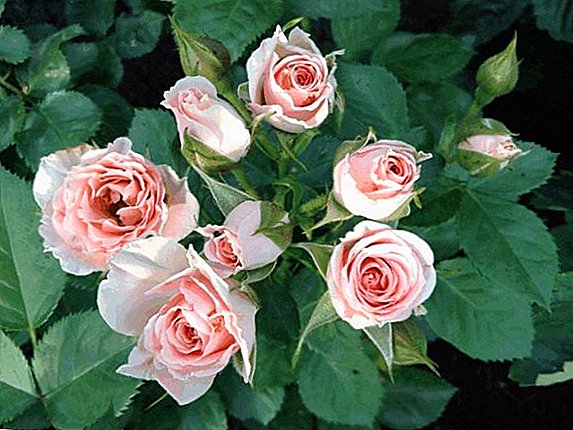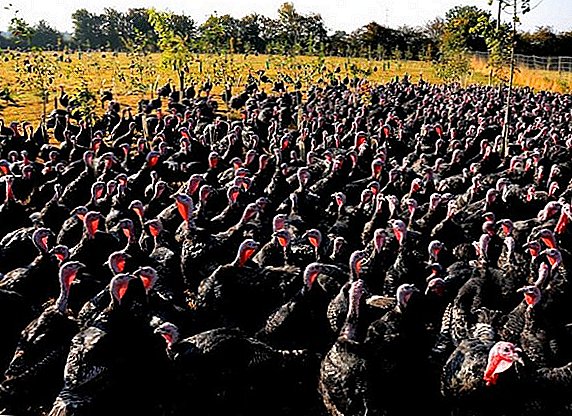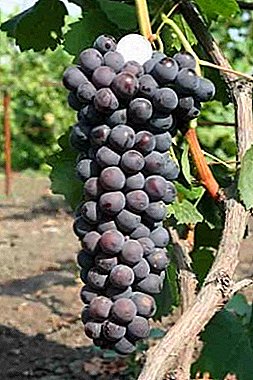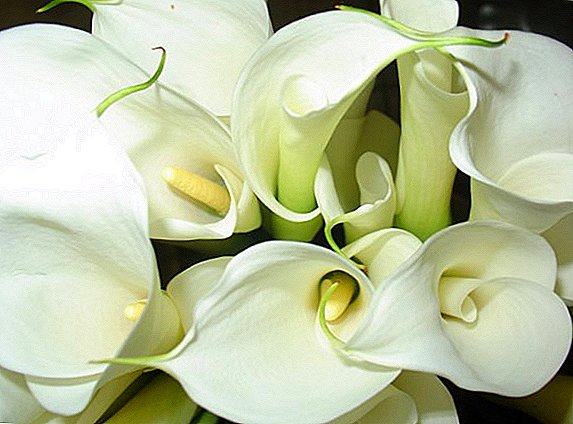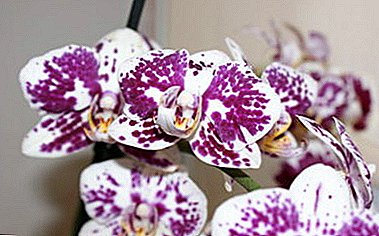
Until recently, the cultivation of grapes, because of its high demands on the temperature, humidity and light conditions, was considered a privilege exclusively in the southern regions.
But, thanks to the efforts of breeders, quite a few interesting varieties have now appeared that can successfully grow and bear fruit in the temperate zone, including "Svetlana", featuring good taste, resistance to low temperatures and diseases. Description and photos of the grape varieties "Svetlana" later in the article.
Which group does it belong to?
Grapes "Svetlana" (another name FVR-7-9, I-8-7-9) belongs to the group of white table varieties with early or middle early ripening periods, ranging from 117 to 125 days.
Among the white table varieties popular are also Delight White, Amethyst Novocherkassky and Amirkhan.
Intends for the fresh use. It has an excellent presentation due to the presence of large, attractive clusters, pleasant taste and aroma.
It has a fleshy, juicy flesh with a moderately dense skin that is easily biteable. Taste is balanced, harmonious, with light notes of nutmeg. Transportability and keeping quality are good.
Because of the functional feminine type of flowering, this variety during planting is better placed next to varieties with bisexual flowers that bloom in the same time frame.
Female flowers also have varieties of Red Delight, King and Ruta.
Appearance of grapes
 In appearance, the fruits of the Svetlana grape are reminiscent of the Kesh (Talisman) variety.
In appearance, the fruits of the Svetlana grape are reminiscent of the Kesh (Talisman) variety.
Cluster size - very large, average weight from 800 to 1200 g. Delight, Merlot and Bazhen can boast of equally large clusters.
Density is average. The shape is conical. Although, depending on the care and growing conditions, the clusters can be shapeless. Berries - very large size and weight.
On average, their value is about 35 x 31 mm, weight - from 14 to 16 g. Color - white. The number of seeds in large berries - from 1 to 3. In the smaller fruit seeds are missing.
It has a high sugar content of 17–23% and a rather low acidity (6–8 g / l). The safety of the crop on the bushes - high. Closer to autumn, the grapes berries are partially healed, without losing their taste.
Bianca, Aladdin and King Ruby can boast of their high sugar content.
Refers to vigorous varieties, with high rooting of shoots. Due to the large weight of the clusters and berries, it may be subjected to additional loads during the fruiting period, therefore, they must be partially removed.
To receive good harvest Svetlana grapes with beautiful, large fruits of regular shape, excellent taste characteristics and good transportability, for its formation it is necessary to use short or medium pruning (5-7 eyes).
A photo




Breeding history and breeding region
The hybrid form of grapes "Svetlana" was bred in VNIIVIV them. Ya.I. Potapenko, in the Rostov region, Novocherkassk.
The Talisman and Rusbol varieties were used as the basis for its preparation. The authorship of the breeding variety belongs to a Russian breeder, Svetlana Ivanovna Krasokhina, a leading researcher at the Institute's breeding laboratory.
Unlike the parent varieties, this variety of table white grapes has more short term ripening (5 -7 days earlier than Talisman).
In central Russia begins to ripen in the 15-20 of August. Currently cultivated in Russia, as well as in the vineyards of Ukraine and Belarus.
In the same scientific research institute such varieties as Vityaz, Demeter and Ilya appeared.
Description varieties Svetlana
 Variety is among hardy, frost resistantable to withstand negative temperatures up to -25 degrees.
Variety is among hardy, frost resistantable to withstand negative temperatures up to -25 degrees.
One of the advantages of this grape is its high yield. The number of fruitful shoots on the bush is usually up to 90%. The number of bunches per escape is from 1.5 to 1.8 pcs.
High yields are also demonstrated by the Anniversary of the Kherson Summer Resident, Rkatsiteli and the Gift of Magarach.
As a rule, 2 inflorescences grow on the shoot, although sometimes their number increases to 3 pieces. It is resistant to gray rot and mildew.
Unassuming about soil conditions, simple in agricultural technology. The need for preventive treatment of fungal infections: 1 - 2 times per season. It grows well with stocks. Fresh tasting assessment of grapes: 8.3 points.
Diseases and pests
Despite its resistance to various fungal and bacterial diseases, the Svetlana grape variety needs to take preventive measures in order to protect it from negative biological factors, such as diseases and pests from the world of insects. Among his main "enemies" are:
- Spider mitebreeding massively in conditions of excessively dry weather. The result: early leaf fall, inhibition of the ripening of berries and the destruction of the tissue of the vine, which can lead to the death of the plant in winter.
Methods of struggle: 0.2% solution of drugs "Fozalon" or "Rogor", which need to process the bush immediately after the appearance of the first buds. The frequency of treatments: once every two weeks.
- Grape mite, "attacking" young shoots of grapes in the spring. A sign of the appearance of a pest can be the appearance of white bloom and cracking of the leaves.
Methods of struggle: Processing "Nitraphone" after removing the cover. Pollinate young shoots, then spray them with a solution of colloidal sulfur. It is also possible spraying drugs "Omayt", "Aktellik" and "Talstar".
- Phylloxera. It is a threat to the leaves and roots of the plant. In the first case, bulges with larvae appear on the back of the leaves, after which they begin to rot. The appearance of the phylloxera of the root type leads to the quick death of the grapes due to the reproduction of microorganisms on its roots, sucking all the life-giving juices from it.
Methods of struggle: If a bush is significantly damaged (more than 75%), it must be removed. If a small amount of leaves are damaged, they should be torn off and burned. Preparations for processing: "Aktellik", "Fozalon" and "Confidor".
Quite often, a serious threat to the future grape harvest is carried waspshowever, in the case of a representative of this variety, they are practically not interested in them. In addition, "Svetlana" is resistant to the occurrence of such dangerous diseases of grapes as gray rot and mildew.
In the prophylactic and therapeutic treatment of grapes with different preparations, they must be alternated, since all pests and diseases can adapt to them. As a result, the effectiveness of the drugs used will be reduced to zero.
It is also necessary to take timely preventive measures against anthracnosis, bacteriosis, chlorosis, rubella and bacterial cancer.
In short, with the right agricultural practices, regular and comprehensive care, Svetlana grapes can give excellent yield when grown in temperate climates.
Having shown a little patience and having studied the relevant literature, this remarkable plant with large, fragrant and tasty berries can be grown at home garden and receive from it huge pleasure and pleasure.



